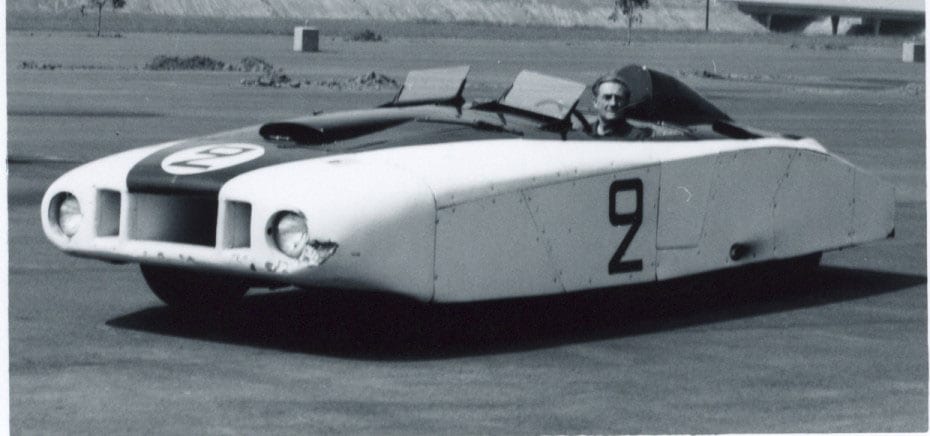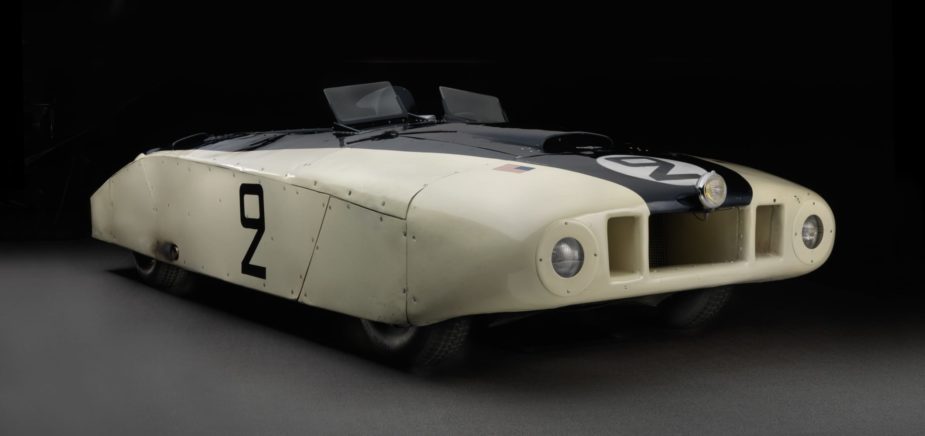Tech Specs
Eight-cylinder, 90 degree vee engine, overhead valves, 331 cubic inches, 160 hp at 3800 rpm.
Before/After
1950 Cadillac


About the 1950 Cadillac Series 61 Le Mans “Le Monstre”
The French called this car “Le Monstre.” As Le Mans rules permitted rebodying of standard automobiles, this aberrant look represented an attempt to reduce both weight and wind resistance. Briggs Cunningham had decided to hedge his two-Cadillac bet for Le Mans, streamlining this car to render it more competitive, while leaving the other alone in case the aerodynamic experiment failed.
Both Series 61 Cadillacs were prepared for the race at Frick-Tappett Motors. The Colliers’ coupe received twin carburetor manifolding by Frank Burrell, air scoops for the brake drums and an extra gas tank for the trunk. Otherwise, that car was essentially showroom stock.
Underneath so was Le Monstre, although its body was so extraordinary that Le Mans officials spent hours in examination to assure themselves that the chassis was standard Cadillac. Standard, too, was the engine, except for a five carburetor induction system and some fine tuning.
A Grumman engineer on Long Island had contributed the body design. The scale model was tested in a wind tunnel normally used for evaluating crop dusters and other slow flying airplanes. Aircraft influence in the car extended to inclusion of a tubular “crash frame.” Notwithstanding its barge-like appearance, the Cadillac Le Monstre measured three inches narrower than the Cadillac Petit Pataud. With top speed of 130 mph, it was some 13 mph faster than its teammate.
Despite its theoretical advantages, the Cunningham-Walters Le Monstre finished 11th to the Collier brothers’ 10th. Although Briggs had pooh-poohed Miles Collier’s suggestion that a shovel be carried as onboard equipment, he doubtless rued that decision after slamming into a sandbank and laboriously digging Le Monstre out by hand. The time was lost there, and the subsequent loss of all but high gear, prevented this car from realizing its potential.
The American entry had been a popular one at Le Mans, and the Cadillacs finished to a tremendous ovation. The American drivers were toasted in the European press for their “skill, sportsmanship and dauntless good humor.” Much had been learned. Better was to come.
Photos – Peter Harholdt


















